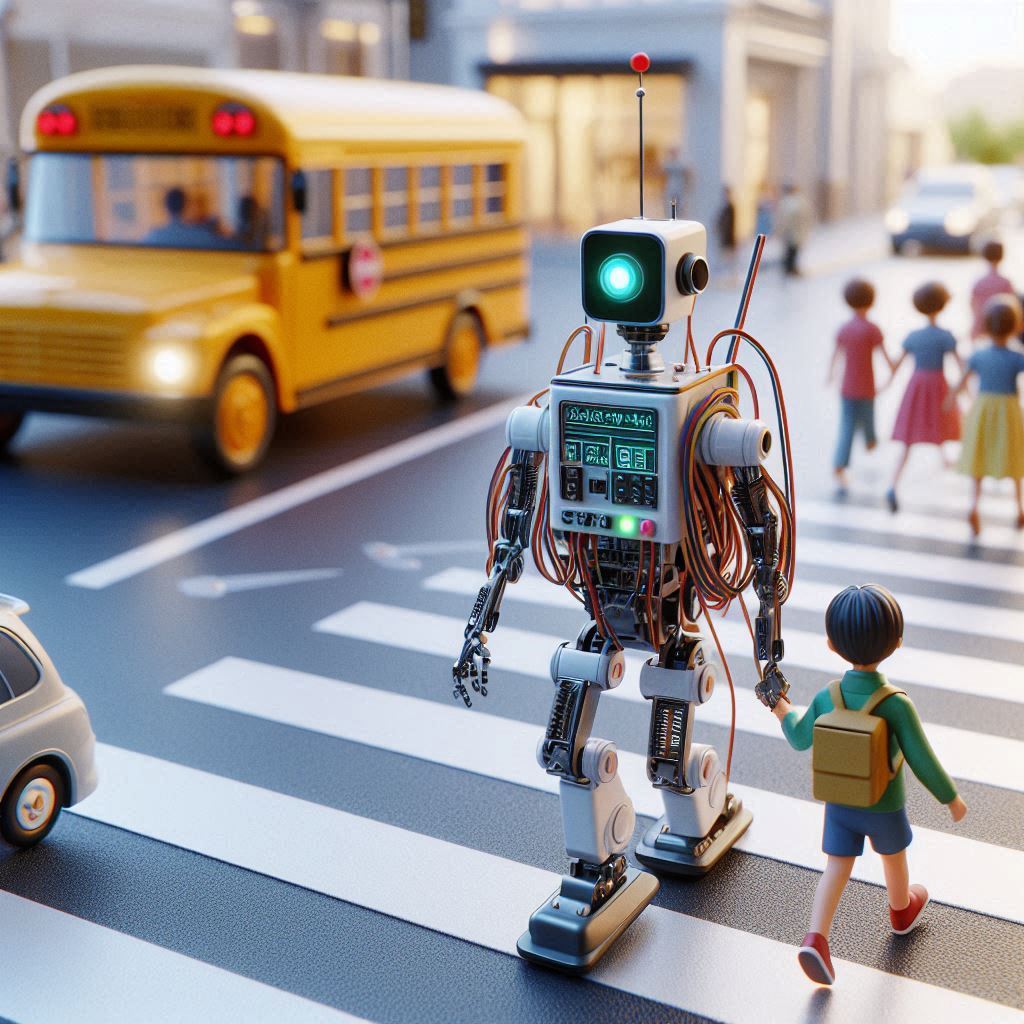
In response to the ongoing shortage of crossing guards in the Bay Area, a Fresno State professor has developed a robotic solution designed to keep kids safe at crosswalks. Dubbed "CrossBot," this innovative device, which resembles a small lawnmower with a single black pole topped by a tablet-sized screen, is equipped with advanced technology to protect pedestrians—especially children.
The brainchild of Hovannes Kulhandjian, an associate professor of electrical and computer engineering at Fresno State, CrossBot was recently showcased as a potential remedy for the shortage of crossing guards that has plagued school districts across the region since the pandemic. Kulhandjian, who also collaborates with the Mineta Transportation Institute in San Jose, is currently working on a patent for the device.
"CrossBot is a very serious device; you have to have a very low probability of error because you are dealing with kids," Kulhandjian explained. The robot is outfitted with a suite of sensors, including Lidar, radar, and video cameras, alongside a microphone and speaker system. These are all governed by advanced algorithms, enabling CrossBot to monitor its surroundings with a 360-degree view and ensure the safety of children crossing the street.
In practice, CrossBot operates by positioning itself at the curb and rolling into the crosswalk when it detects a safe gap in traffic. As it moves, the screen turns red, warning approaching vehicles to stop. Once the vehicle halts, the screen turns green, signaling to waiting children that it is safe to cross. The robot also has the capability to verbally notify visually impaired pedestrians when it is safe to proceed.
Kulhandjian was inspired to create CrossBot after witnessing teachers at his daughters' school stepping in as crossing guards due to staff shortages. He designed the robot to assist all children, including his own, and has tested it on city streets with a 90% accuracy rate in detecting vehicles, cyclists, and pedestrians.
Despite the potential benefits, not all parents are convinced. Kelly Lathrop, a parent from Lafayette, expressed concerns about the reliability and security of a robotic crossing guard. "I wouldn't trust a robot to not malfunction or not get hacked. We need real eyes on these major and minor intersections," Lathrop said.
However, others, like Angela Roberts from Santa Clara, see the robot as a viable solution to the recurring issue of crossing guard turnover. Roberts noted the frequent absence of crossing guards at her daughters' school and the difficulty districts face in hiring and retaining staff due to the job's hours and pay. "The demand for robotic crossing guards may be a good solution," she said.
The need for enhanced pedestrian safety is clear, as the U.S. Centers for Disease Control and Prevention reports that pedestrian-related car crashes are the second leading cause of death for children under 14. In 2022, over 7,500 pedestrians were killed by drivers in the U.S., the highest number since 1981, according to the Governors Highway Safety Association.
While Kulhandjian acknowledges that CrossBot isn't meant to replace human jobs, he believes it could serve as a crucial supplement in areas with a shortage of crossing guards. "CrossBot is designed to complement and enhance human efforts rather than replace them," he said, adding that the robot could be a cost-effective solution for schools, with an estimated price tag of $15,000 to $17,000.
As robots continue to expand their roles in various industries, from warehouse logistics to airport security, CrossBot represents a new frontier in public safety technology. Kulhandjian is optimistic about the potential of CrossBot to provide critical safety measures in areas where human resources are stretched thin.